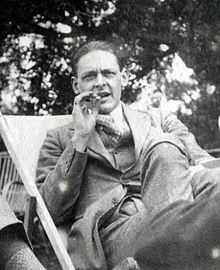The below post was written in response to a question I received from "Book Collecting [1]." It's been brought to my attention that this was a kind of trolling question.
My first reaction was to withhold or delete the post, but I'm going to try and ignore the bad vibes and post it anyway. I like what I wrote and I want to see where it takes me.
I hope that everyone with an honest intent does indeed ask questions, if they have any.
---
In response to a comment from my last post, the book collecting continues. The question was: what is an example of a great literary work and its imitation? Here's what I have to say.

We'll focus on the filled space instead of the empty for the moment. The item I'm seeking to collect is Poetry, a Magazine of Verse, January 1913, Vol. I, No. 4, edited by Harriet Monroe. My interest is in a single poem therein.
From an online edition of the poem in question, we can read this footnote:"NOTE: In a letter to the editor printed in the Times Literary Supplement (8 Dec. 1995, p. 14), Robert Ian Scott suggests that "the many similarities between this poem" and T. S. Eliot's "The Waste Land" "can hardly be coincidental." Scott notes that Eliot "had reasons to be reading" the Jan. 1913 issue of Poetry in which Cawein's poem appeared because it contained Pound's article on the poets then in London (though Eliot himself is not referred to in the article).
Next, have you heard of Modernism? This is the movement which is Eliot represents, a more revered and central figure of the era than any other.
Modernism, according to our love and savior Wikipedia, is
Another major Modernist player, Ezra Pound, popularized a saying that epitomized the era: ""Make it new!"a philosophical movement that...arose from wide-scale and far-reaching transformations in Western society during the late 19th and early 20th centuries. Among the factors...were the development of modern industrial societies and the rapid growth of cities...then the horror [of] World War I. Modernism, in general, includes the activities and creations of those who felt the traditional...becoming ill-fitted to [modern] tasks and...the...emerging, fully industrialized world.

A notable characteristic of modernism is self-consciousness and irony concerning literary and social traditions, which often led to experiments with form...[it] makes use of the works of the past by the employment of reprise, incorporation, rewriting, recapitulation, revision and parody.
What, then, could Elliot have meant in penning The Wasteland, a classic Modernist work? Was he presenting the world an idealized Modernist homage of an outdated prose, whittling the knotted bough of a dying age down, spinning it and pushing it, again, again, again, until the spark and blaze of a new movement spits to life? Was he crafting a delicate and defendable art?
Or was he straight-up stealing?
Eliot's opinion was a matter of public record. "Immature poets imitate; mature poets steal."
With our introduction complete, let's look at the poem of note in the Jan '13 edition. It's titled--hey look at that--
Wait, but this poem came out in 1913. What was Eliot's poem called again? Oh yeah.
Only his came out in 1922. One year shy of a decade later.

But wait! You may be saying. Those two poems are wildly different! Eliot's is WAY longer, for starters. And...uh...
huh.
Ok, let's look at some differences. We'll do so as we examine the second part of this match, the Great Literary Classic that's in absentia (ie: too expensive to own).
In the next post: The Wastelands side by side, with a particular look at what brings us to this discussion: how imitation and flattery factor in.
x
x
x
Yes, I ended with a preposition. Grammarians, take heed. That's now allowed.
Far out!
